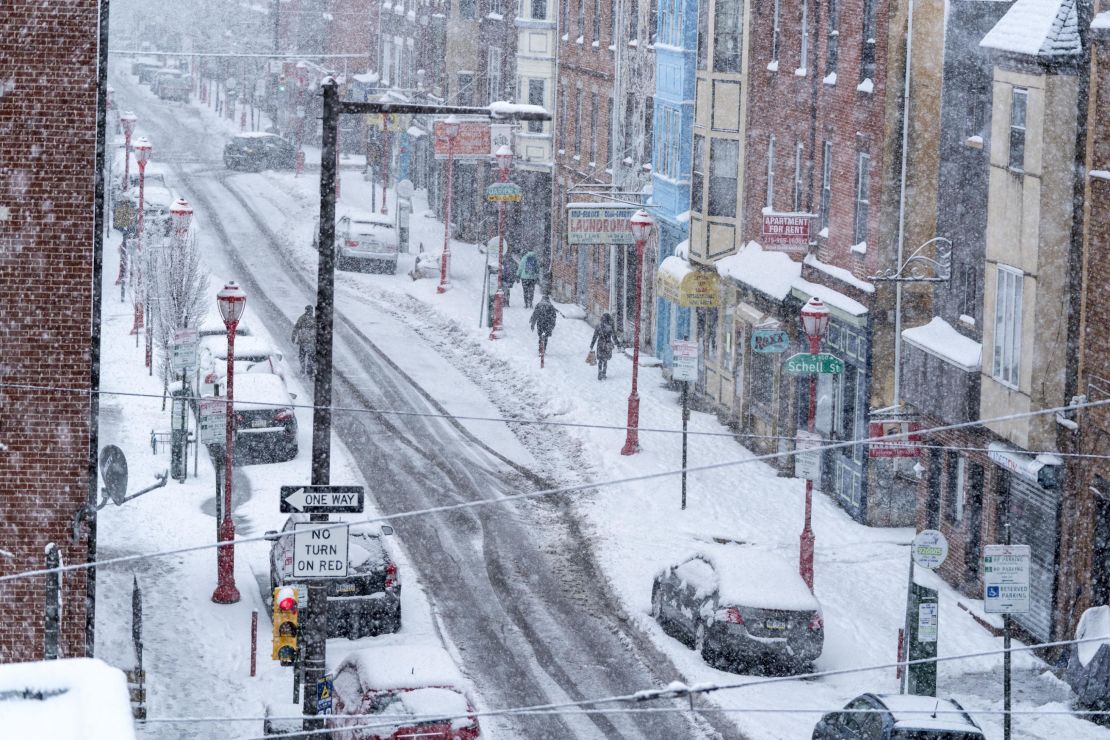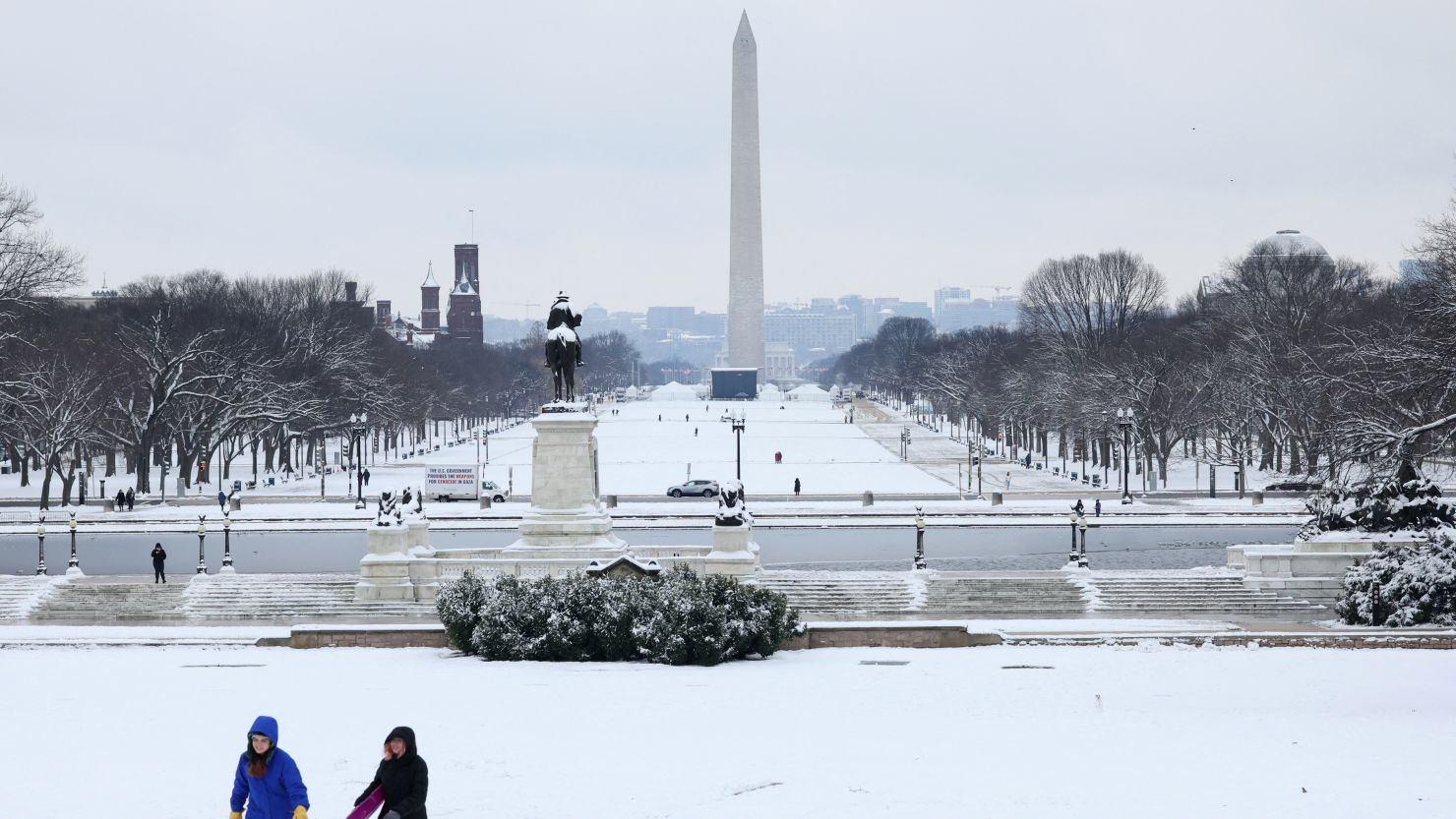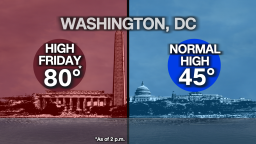Winter has been more wet and warm than white in the Northeast, with no major snowstorms to speak of in what’s been a two year wait for a big snow event.
Major cities along the region’s I-95 corridor are running deficits on their typical winter snowfall despite a few batches of modest snow that ended record long snowless streaks.
But winter isn’t over yet, despite that famous groundhog’s prediction, and February has historically proven to be its best chance for blockbuster snowstorms. Mix in El Niño’s influence, and even March could hold snowy surprises if the right conditions align.
Winter did not get off to a promising start. December was the second-warmest on record across eight Northeast states, according to data from NOAA. It was one of the 10-warmest Decembers for several other states, including parts of the mid-Atlantic.
January continued the trend and was warmer than average for every major city in the Northeast and mid-Atlantic, despite a short-lived blast of frigid air mid-month.
It’s part of a larger trend. Winter has become the fastest-warming season for nearly 75% of the US and snowfall is declining around the globe as temperatures rise because of human-caused climate change.
More snow has fallen in major cities so far than in recent lackluster winters, despite the warmth – but the bar is incredibly low.
Most cities’ seasonal snowfall totals are still pacing behind average. New York City’s snowfall total this season is just over 2 inches even after multiple storms. This is well short of the 13.7 inches the city typically sees by January 31.
The problem is major snowstorms have eluded the region.
Philadelphia hasn’t had a snowstorm unload 6 inches or more in a day since December 2020. It’s been more than two years since the last time such a heavy snowfall event hit New York City and Washington, DC.
February could finally bring a big snow if the right conditions align.
Trace a path along I-95 from Richmond, Virginia, to Portland, Maine, and nearly every city along and east of the busy roadway typically gets more snow in February than any other month.
This is because ocean temperatures close to the coast usually cool off by February, allowing coastal storms – like nor’easters – to tap into colder air and produce more snow, Paul Fitzsimmons, a meteorologist with the National Weather Service in Mount Holly, New Jersey, told CNN.
Global ocean temperatures are still at record-warm levels, but sea surface temperatures along much of the immediate Atlantic coast have chilled considerably compared to early January, when the Northeast’s first snowstorm arrived and produced little to no snow along I-95.
Ocean temperatures are typically coldest in the late winter because water loses its heat built up during the warm season much slower than land does, Fitzsimmons explained.
As a result, more impactful Northeast snowstorms occur in February than any other month, according to a scale used to rank snowstorms from the National Centers for Environmental Information. January is a close second, with March third and December fourth.
In one of the most recent examples, a Category 3 “major” storm on the NCEI scale dumped over a foot of snow in New York City’s Central Park right at the start of February 2021.
El Niño – a natural phenomenon in the tropical Pacific that influences weather around the globe – could also provide a boost for snow along the I-95 corridor in February. El Niño winters favor a storm track along the southern tier of the US, increasing the chances for storms to push off the coast and become potent, snowy nor’easters.

Nor’easters can also get “juiced up” by abundant tropical moisture and deliver “two to three big snowstorms” on average during an El Niño winter, Jon Gottschalck, chief of the Operational Prediction Branch of NOAA’s Climate Prediction Center, previously told CNN.
Not all hope is lost if February doesn’t produce a big snowstorm. Opportunities for snow persist into March, but really plummet in April.
Nor’easters continue to be a threat in March, as evidenced by an extraordinary series of four storms that unfolded in 2018. The four nor’easters slammed the Northeast in under four weeks, earning them the moniker of “four’easter.”
These storms brought considerable coastal flooding, damaging winds and heavy snow to much of the Northeast that March. At least 10 to 20 inches of snow fell across parts of every state in the region, with 20 to 30 inches in portions of upstate New York and New England.
Blockbuster snowstorms are not guaranteed, especially with so much warmth, but these next few weeks may be the last real chance this winter.
Average snowfall amounts become quite abysmal in April. New York City, Philadelphia and Newark, New Jersey, all average 0.5 inches of snow or less for the month.




